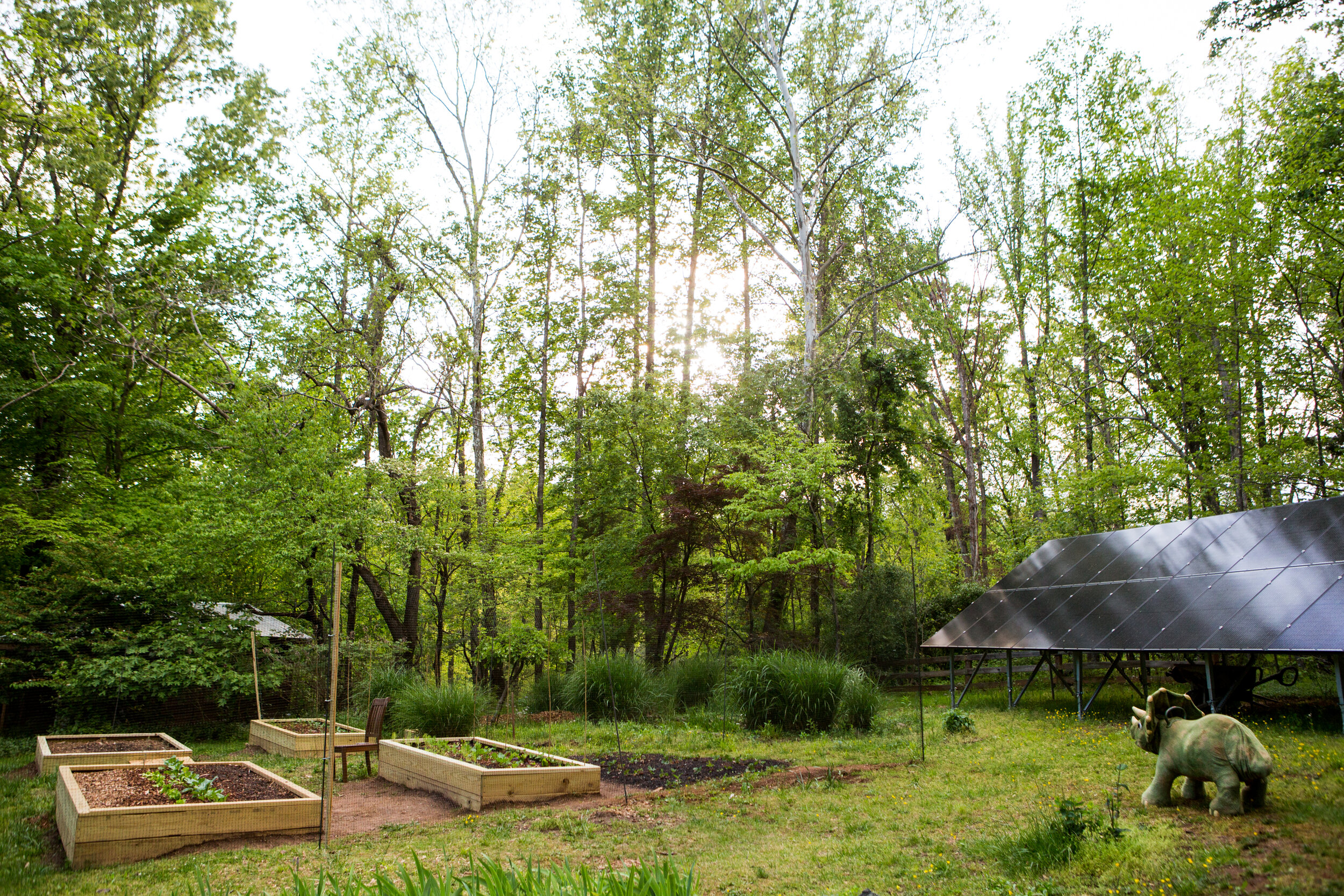
Welcome to Our Permaculture Homestead
After 13 years of researching “doomsday preppers” and homesteading for my apocalyptic novel, We Can Save Us All, I realized I had none of the survival skills I’d been writing about. I wanted to change that. Without becoming a total weirdo.
We began preparing our home to survive a grid-down situation, and dove into homesteading projects to inform our new lifestyle.
Here’s what happened next…
Permaculture Homesteading How-Tos and Articles
How to Build a DIY Deer Fence for Gardens #2: Step-by-step instructions
In Part 1, we covered the different types of garden fences you can choose to keep deer away from your vegetable garden — like wood, welded wire, electric fences, and natural/chemical repellents — along with detail on the planning phase, including how to determine your fence line and choose materials. Here in Part 2, we'll give you our full recipe for the heavy duty, half-invisible/half-very-conspicuous DIY wire mesh fence we made for Thunderbird Disco, with step-by-step instructions to follow.
How to Build a DIY Deer Fence for Gardens #1: Planning
Deer can jump over regular fences up to about 6 or 7 feet high. But with the installation of a tall, heavy duty, and reliable deer fence, you can create a barrier that will effectively keep these beautiful jerks at bay. At first, we got some insanely high professional estimates to build our fence, and while they would've completed the job in a weekend (it took us closer to two years; tough to carve out the time), we built our garden fence ourselves for a fraction of the price, using the materials we wanted, and today the finished project is extremely satisfying to look at. Here's what we did to DIY it.
How to Use a Wood Burning Stove: Tips & Techniques
Fresh off a recent power outage, our wood burning stove has been putting in work. Winter storms and heavy winds often trigger falling trees on our property, so we've got a solid amount of seasoned wood saved up to burn in our wood stove. These things can kick out a surprising amount of heat, so we try to get a fire burning when it's cold in order to help with heating costs. Plus, it looks cool.
How to Choose a Portable Power Station: Gas and Solar Generators
The benefits of our woodland homestead are many, but one drawback is that trees are known to fall, and every so often, they fall on power lines or other electrical things, and suddenly, hey, the lights are off. If we’re lucky, it’s a quick flicker and then back to Netflixing, but with larger storms, we’ve experienced power outages lasting a week or longer. This is when portable power stations come in super handy.
Emergency Food Supply Kits and Backup Water “Insurance”
Yes, Food and water insurance. Because I get it: you don't want to be the person who buys a “food bucket.” So my suggestion is merely to add a couple small one-time expenditures — covering EMERGENCY FOOD & WATER — to your insurance portfolio.












